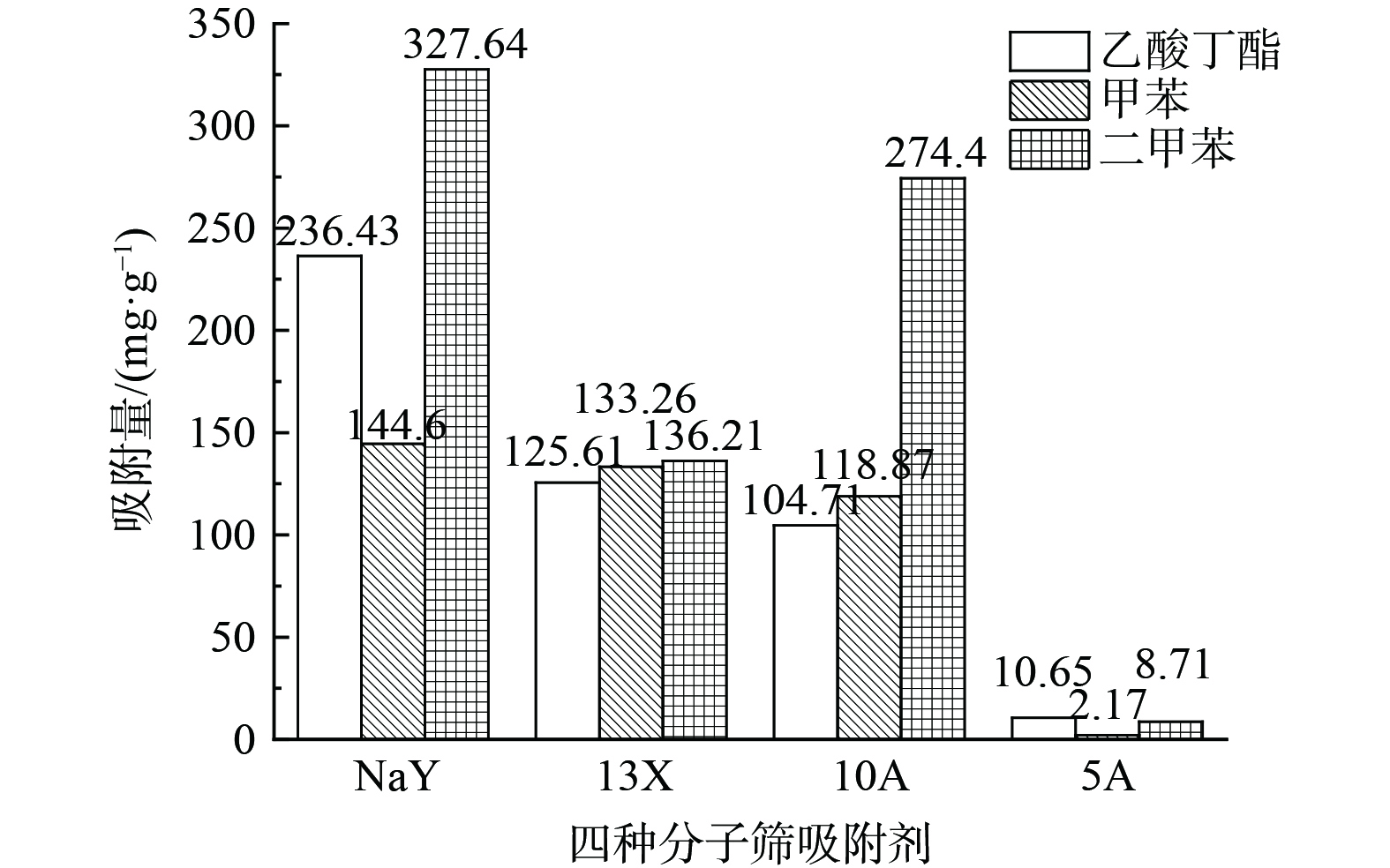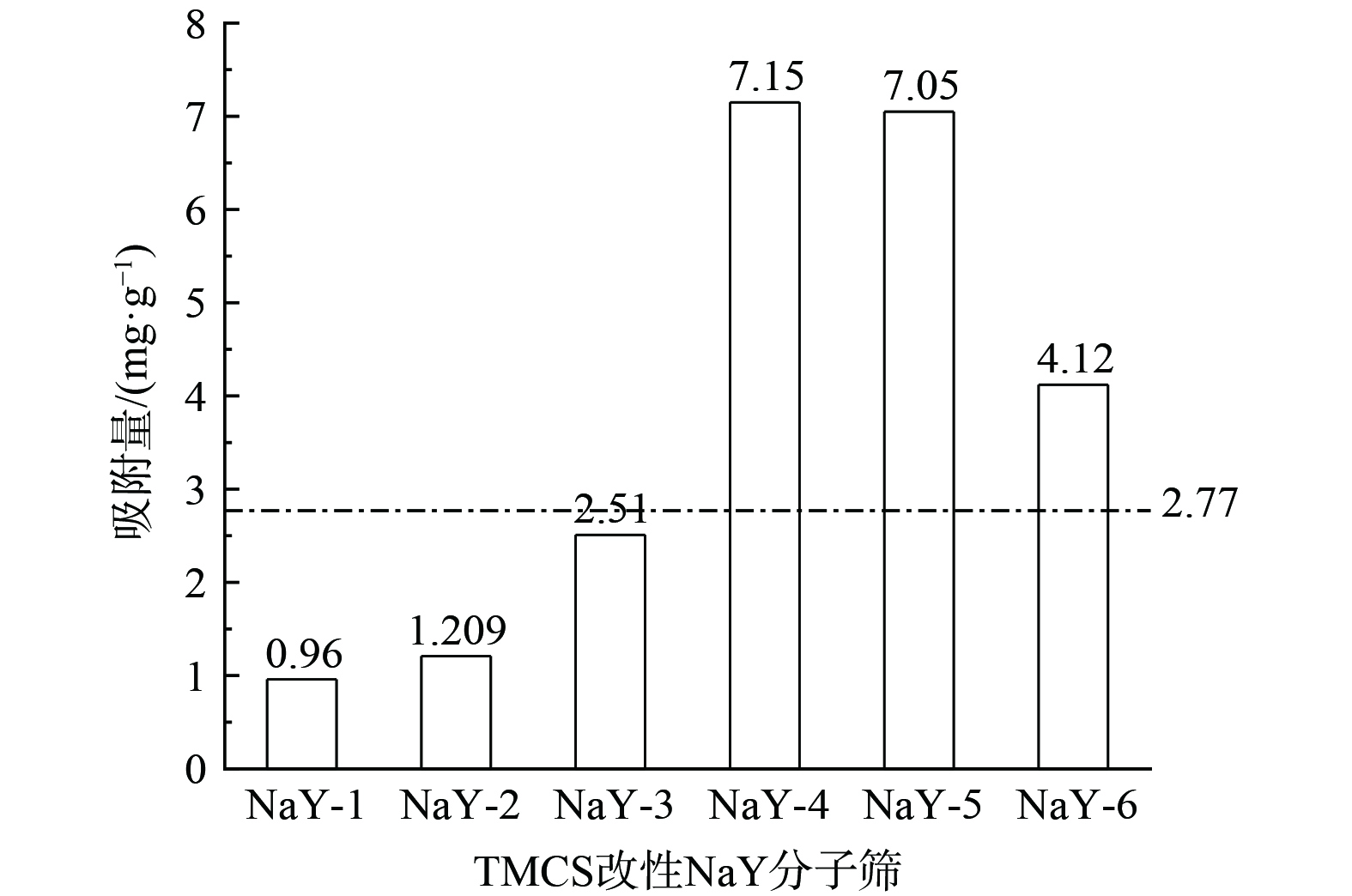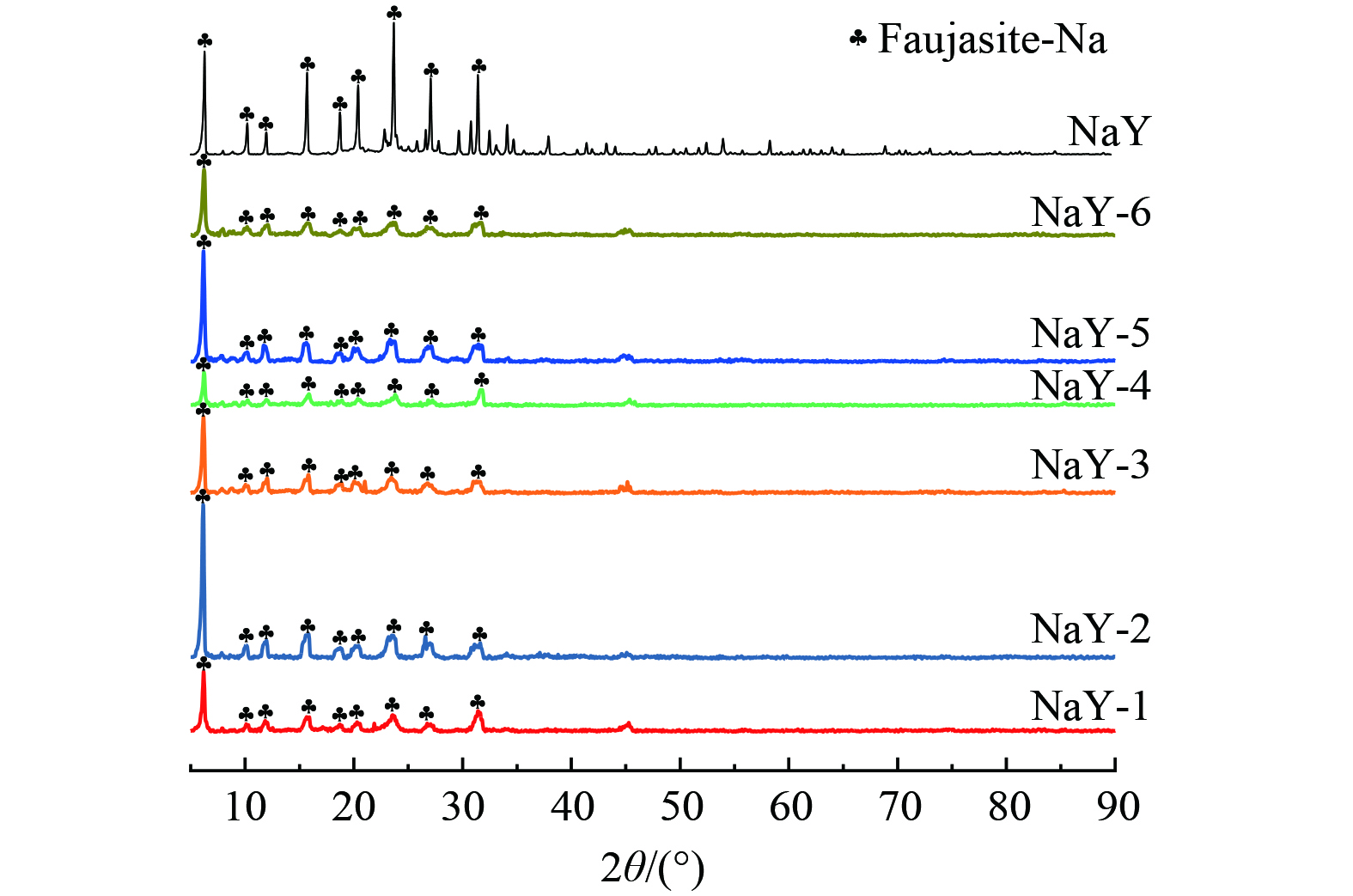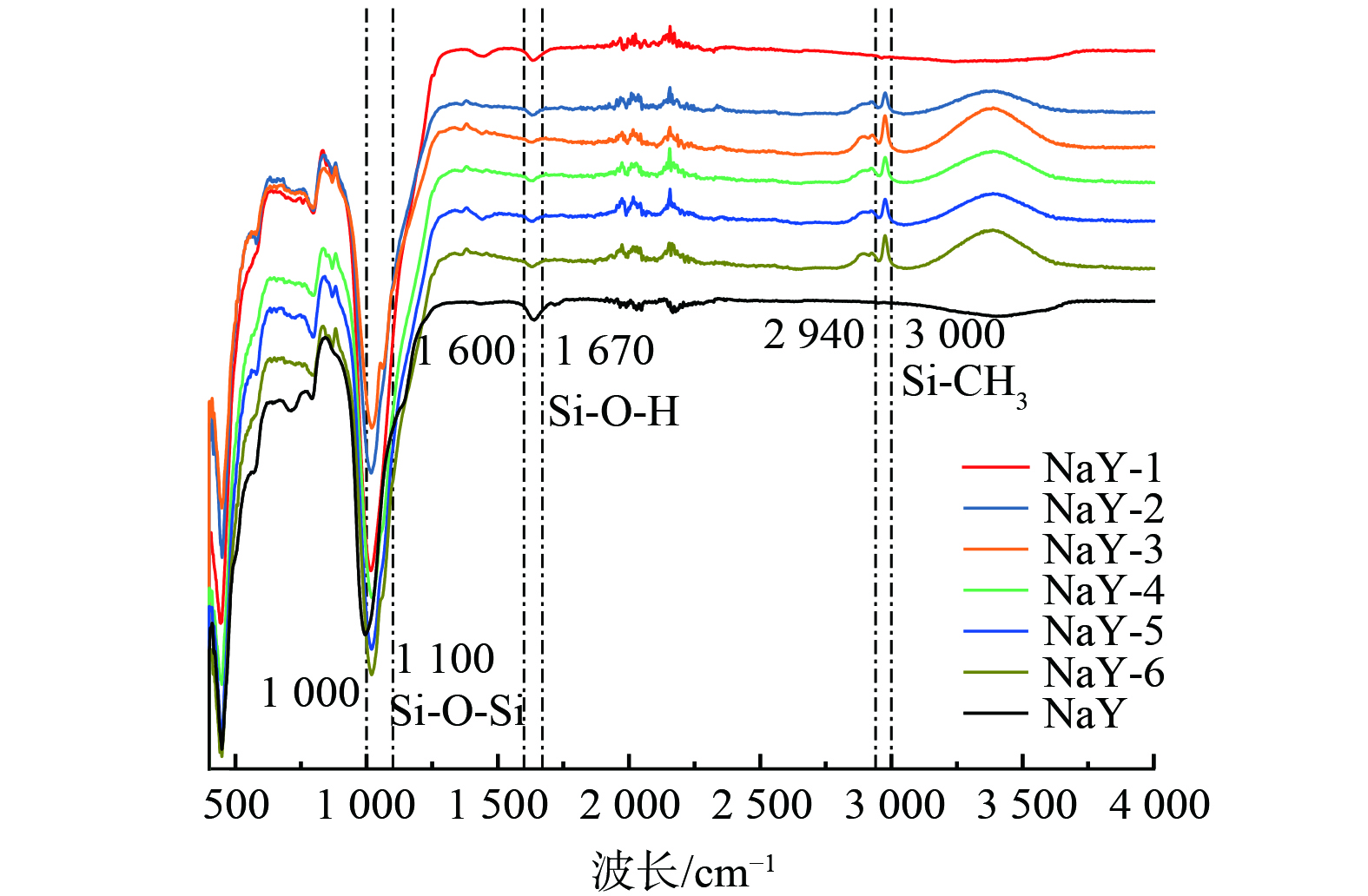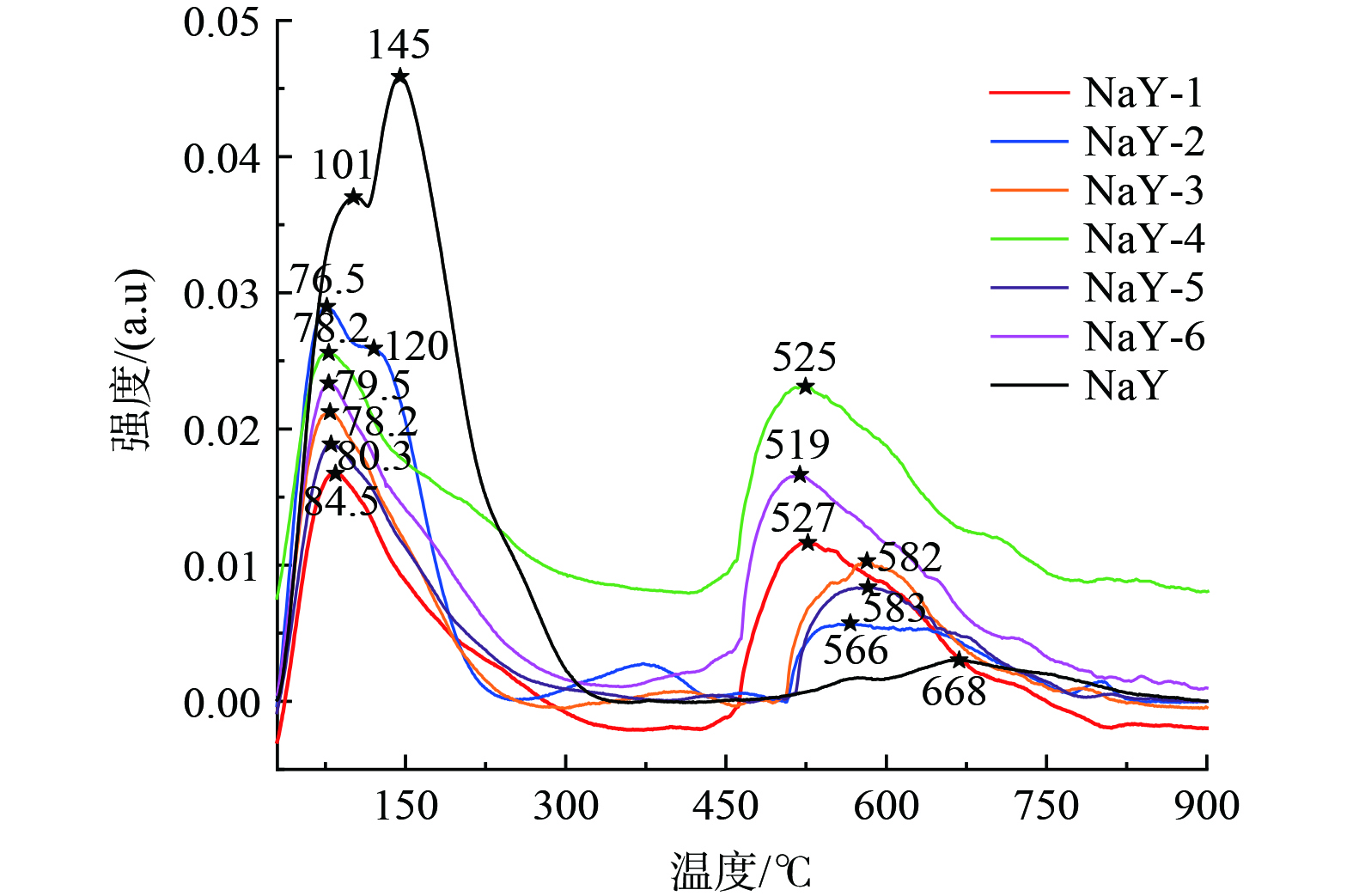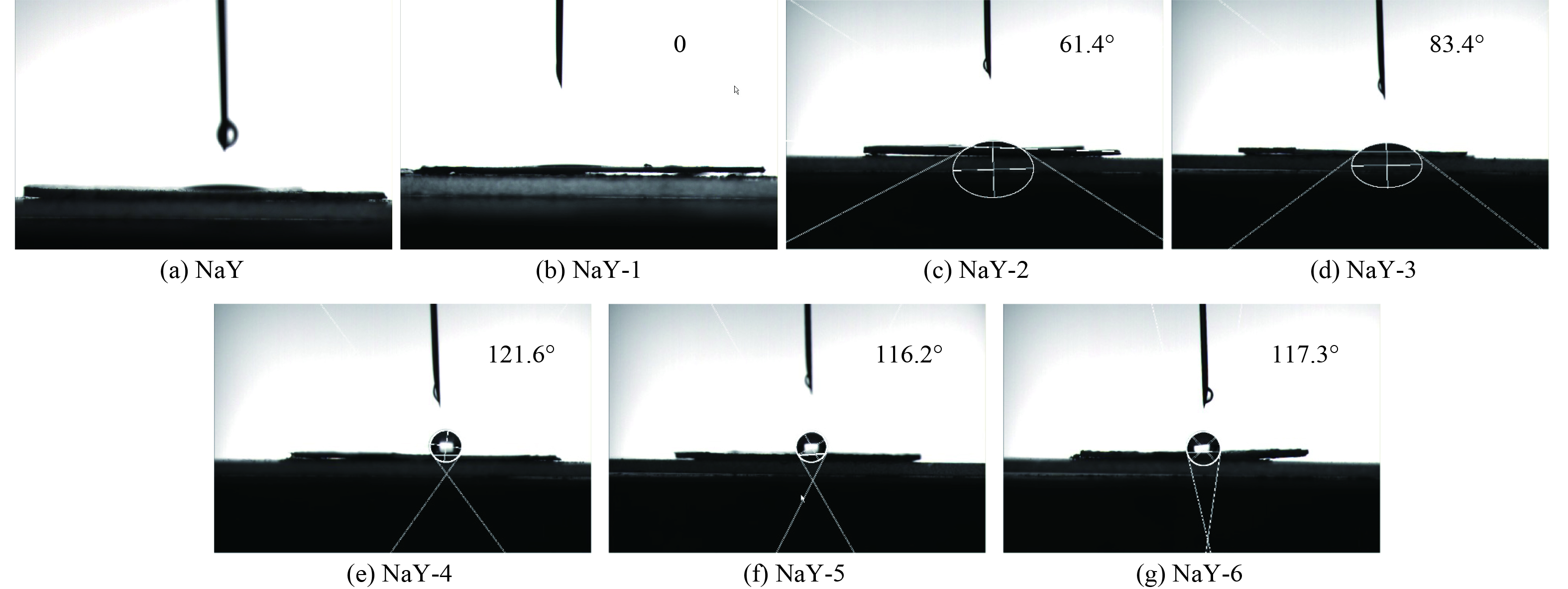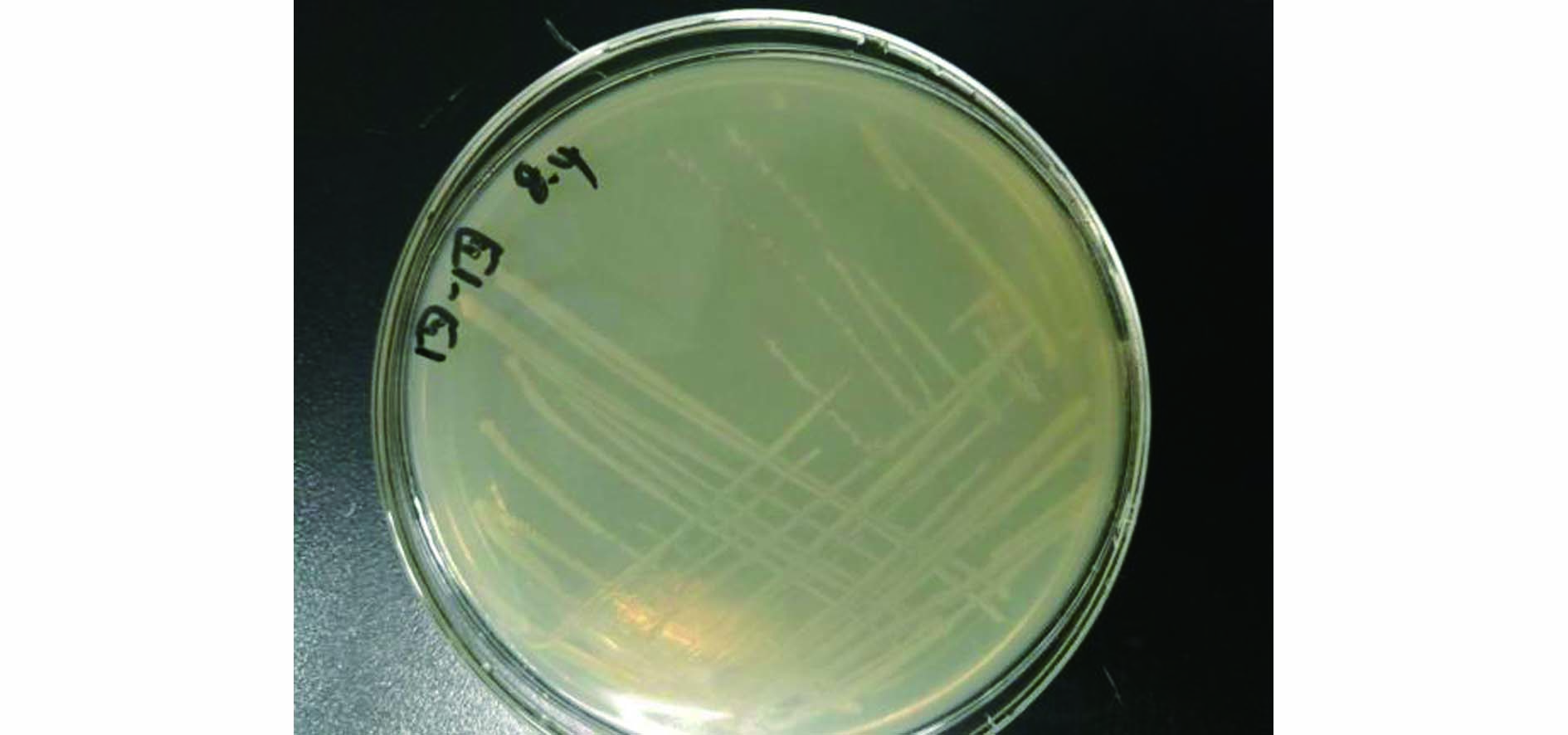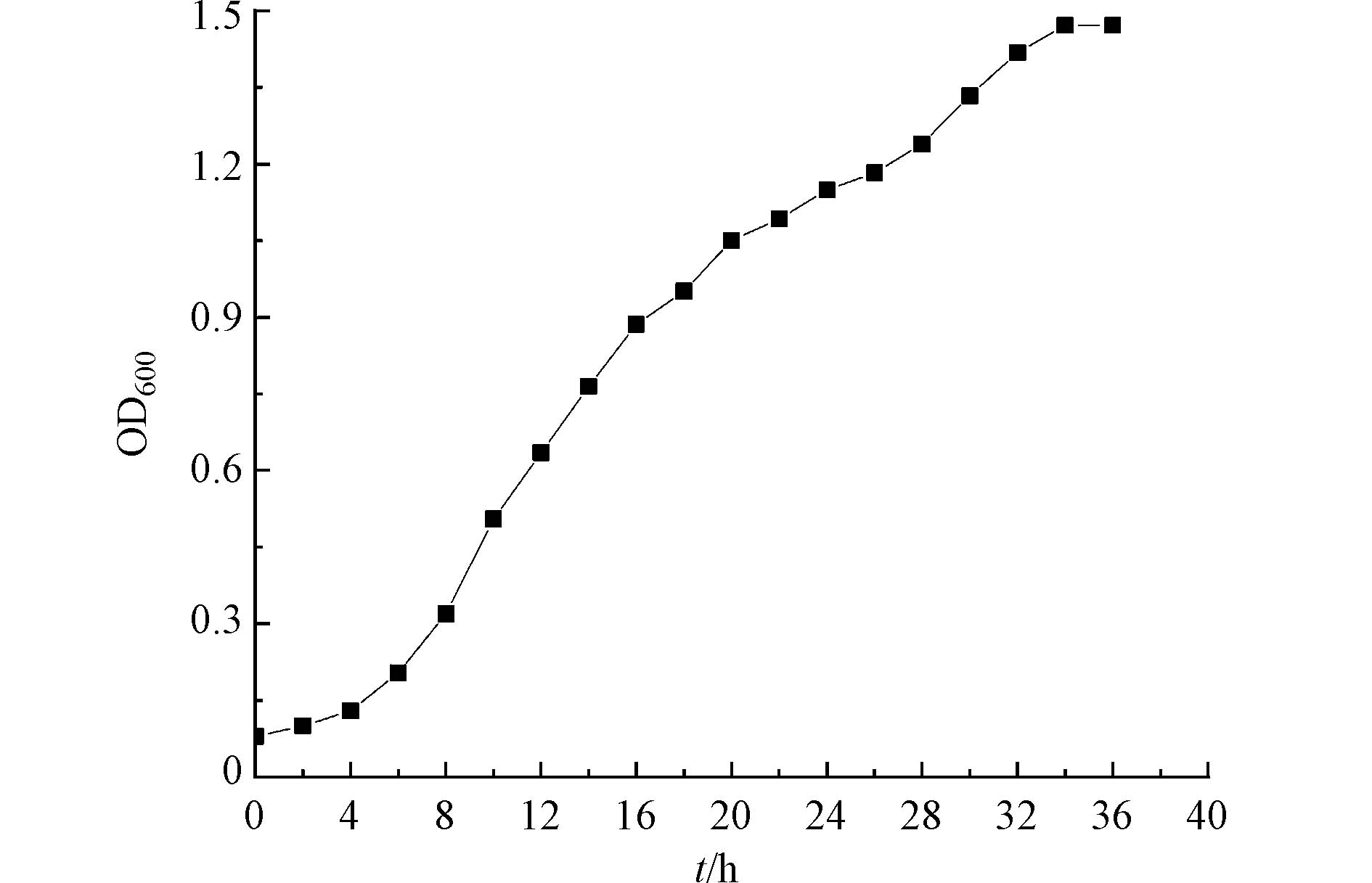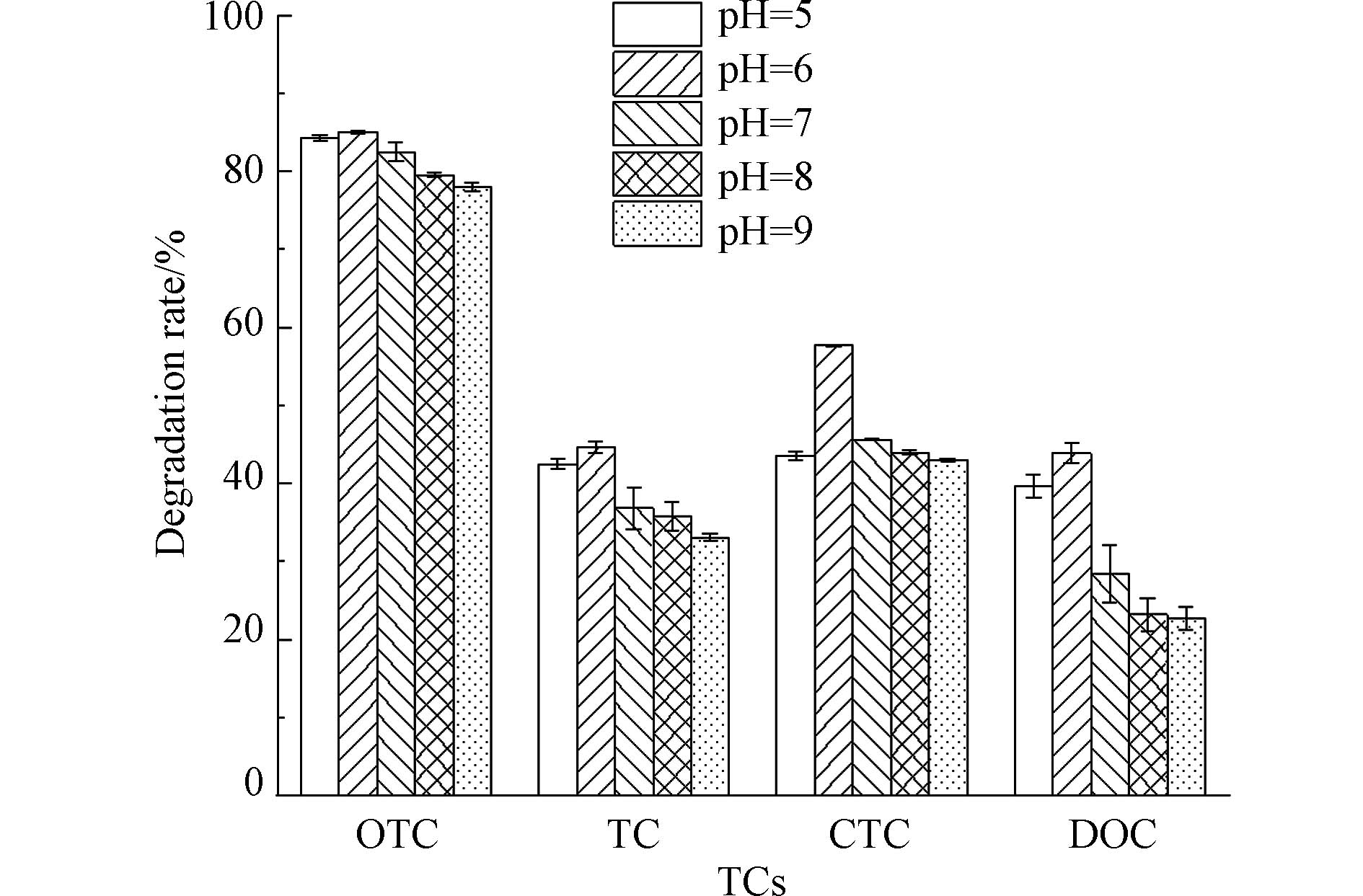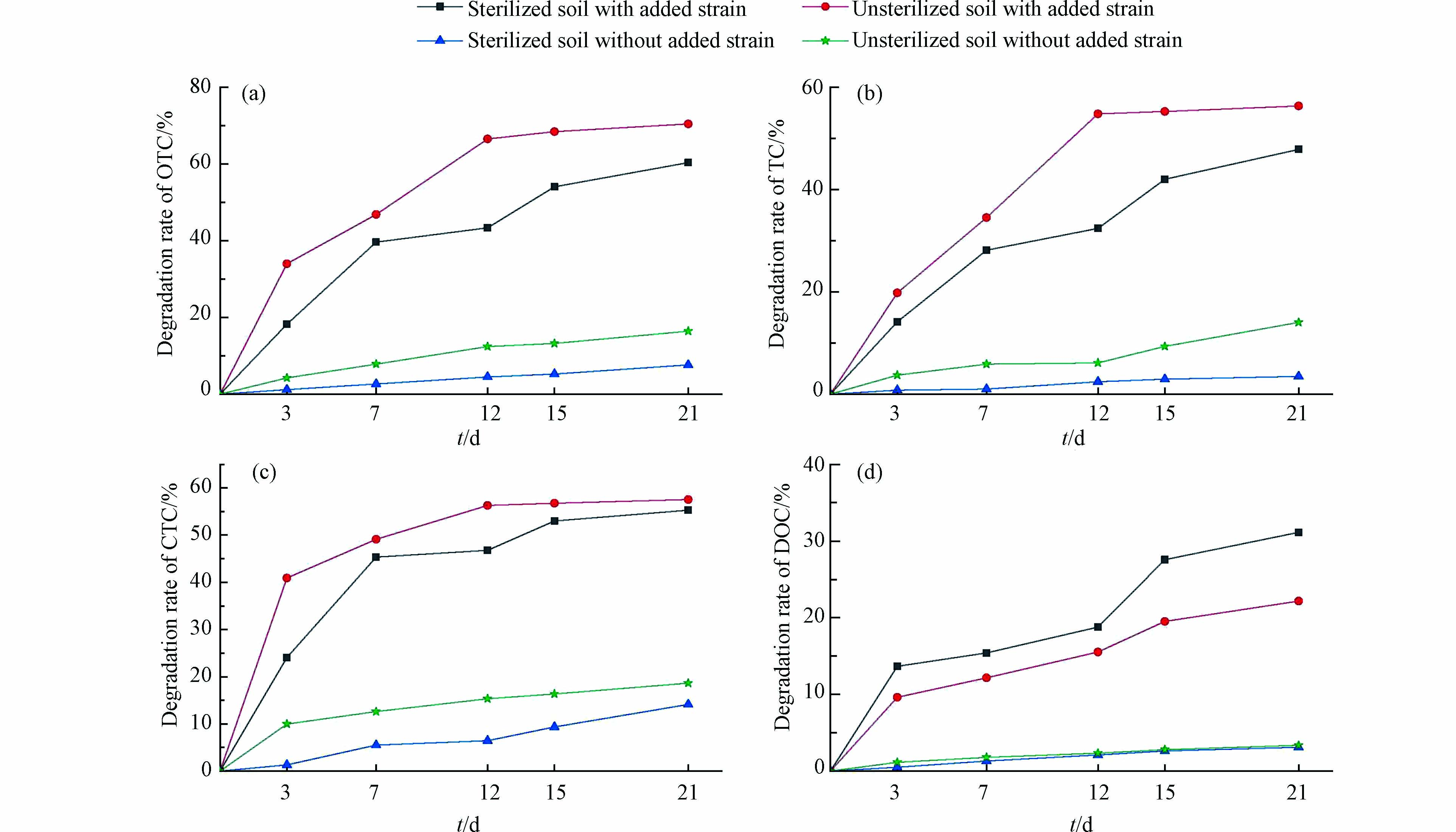-
抗生素是指用于预防或治疗人畜细菌感染产生的抗菌药物,是世界上用量最大、使用最广泛的药物之一[1]。在我国,年产抗生素原料达21万吨,使用量达18.9万吨,其中,兽用抗生素占使用量的一半以上[2]。抗生素种类众多,包括磺胺类、大环内酯类、喹诺酮类、四环素类等,其中四环素类抗生素(tetracycline antibiotics,TCs)因其价格低廉,广谱抗菌等特点,在世界各国的畜牧业中普遍使用。已有研究表明,水体[3-5]、土壤[6-7]、沉积物[8-10]等环境中均有TCs残留,且以土霉素、四环素、金霉素和强力霉素为主,残留的TCS通过食物链进入人体,从而对人体和环境产生潜在威胁[11]。
目前,土壤中抗生素的降解方法主要有理化方法和微生物降解方法两种,其中微生物降解技术因其成本低,效能高,不易产生二次污染等优势,成为众多学者的研究热点[12]。目前已筛选出的可降解四环素类抗生素降解菌属众多,但大都是降解某一种四环素类抗生素,如四环素降解菌[12-15],土霉素降解菌[16-18],金霉素降解菌[19],强力霉素降解菌[20]。翟辉[21]将筛选出的土霉素降解菌加入到污染土壤中,接入菌株的土壤中土霉素降解率比空白高30.63%;陈海宁[22]将前期筛选出的土霉素降解菌加入到污染土壤中表明,非灭菌实验组土壤中土霉素的降解率均高于空白组,土壤中菌株对土壤中土霉素的最佳降解时间为20 d。因此,研究同一菌株降解多种四环素类抗生素,修复多种四环素类抗生素污染土壤研究,减少四环素类抗生素对环境的污染和人体健康的潜在威胁,已成为研究的热点问题。
基于此,本研究从宁夏某制药厂TCS污水处理系统的活性污泥中筛选、分离出一株可同时降解土霉素、四环素、金霉素、强力霉素的高效耐药菌株TCs-2,通过形态观察、生理生化及16S rDNA分子序列分析等手段对菌株进行鉴定,研究pH、温度、降解时间对菌株TCs-2降解土霉素、四环素、金霉素、强力霉素的影响,并探究其在土壤修复过程的实际应用效果,旨在为菌株用于四环素类抗生素污染土壤环境修复提供一定的参考依据。
-
活性污泥采自宁夏某制药厂TCs污水处理系统。
-
无机盐培养基:5 g (NH4)2SO4、1 g KH2PO4、0.1 g MgSO4∙7H2O、15 mg EDTA、4.5 mg ZnSO4∙7H2O、4.5 mg CaCl2∙2H2O、3 mg FeSO4∙7H2O、 1 mg MnCl2∙4H2O、1 mg H3BO、0.4 mg Na2MoO4∙2H2O、0.3 mg CuSO4∙5H2O、0.3 mg CoCl2∙6H20和0.1 mg KI[23],1 L超纯水,于121 ℃、20 min高压灭菌后使用。
无机盐固体培养基:每L无机盐液体培养基加15—20 g琼脂,于121 ℃、20 min高压灭菌后使用。
牛肉膏蛋白胨培养基:10.0 g蛋白胨,3.0 g牛肉膏,5.0 gNaCl,1L超纯水,于121 ℃、30 min高压灭菌后使用。
牛肉膏蛋白胨固体培养基:每升牛肉膏蛋白胨液体培养基中加入15—20 g琼脂,于121 ℃、30 min高压灭菌,待冷却至50—60 ℃时,倒置平板。
-
称取1 g活性污泥加入到含土霉素、四环素、金霉素和强力霉素(以下简称TCs混合液)混合浓度为40 mg·L−1的液体培养基中,避光条件下震荡培养5 d;采用梯度压力驯化法,按 1%的接种量逐步转接至60、80、120 mg·L−1的抗生素混合液体培养基中,以5 d为1个驯化周期,持续培养。
取最终驯化的无机盐培养液以10−3—10−9的稀释倍数进行稀释,然后涂布在含TCs混合液40 mg·L−1的固体无机盐培养基中恒温培养,待长出肉眼菌落后,用平板划线法,在无菌条件下反复划线分离纯化。最后将得到的菌株斜面保存,实验备用。
-
菌悬液的制备:挑取纯化后的菌株,接种到牛肉膏蛋白胨液体培养基中,30 ℃、150 r·min−1恒温振荡避光培养24 h,取出牛肉膏蛋白胨液体培养基,将培养液分装于离心管中,室温条件下于4000 r·min−1离心10 min,收集湿菌体。然后用灭菌生理盐水(0.9%的NaCI溶液)轻轻润洗离心管3次,最后用生理盐水配制成OD600=1.0的菌悬液。
降解菌的筛选:将制备的菌悬液(OD600=1.0)接种到含四环素类抗生素浓度为60 mg·L−1的液体培养基中,避光培养5 d后,检测培养液中土霉素、四环素、金霉素、强力霉素的浓度,计算其降解率,降解能力最强的降解菌为最佳降解菌
菌株的鉴定:将筛选出的高效降解菌株交由生工生物工程(上海)股份有限公司测定菌株的16S rRNA序列,将检定结果在NCBI中进行Blast比对,获得相似性较高菌株,选取同源性高达100%的相关序列作为参考菌株序列,最后用MEGA-X软件中的Neighbor-Joining法构建系统发育树。同时,为确定筛选菌株的生理生化特性,进行菌落形态、细胞形态的观察以及生理生理生化试验(接触酶试验、甲基红试验、V-P测定试验、淀粉水解试验、反硝化试验、脲酶试验、吲哚试验等),其方法均参考《常见细菌系统鉴定手册》[24]和《伯杰氏细菌鉴定手册》[25]。
-
对1.3.2确定的最佳降解菌,研究 pH(5、 6、 7、 8、 9) 、温度(20、 25、 30、 35、 40 ℃) 、降解时间(3、7、12、15、21 d)对四环素类抗生素降解效果的影响。按接种量为5%,加入到含四环素类抗生素浓度为60 mg·L−1的液体培养基中,调节摇床转速为150 r·min−1恒温振荡避光培养5 d,测定培养液中土霉素、四环素、金霉素、强力霉素的降解率。每个处理设置3个平行样,1个空白样。
-
为研究降解菌TCs-2对土霉素、四环素、金霉素、强力霉素污染土壤修复能力,将一定浓度的TCs混合液分别加入到灭菌和未灭菌的土壤中,同时设置添加菌悬液与不添加菌悬液的空白对照组,然后将土样置于恒温培养箱中,以了解菌株TCs-2及土著微生物对污染土壤中土霉素、四环素、金霉素、强力霉素的修复效果。
(1)灭菌土与未灭菌土的制备
土壤采集宁夏某菜地0—20 cm的表层土,剔除土壤中根茎叶、碎石等杂物,于冷冻干燥机中进行干燥,然后过20目不锈钢筛,即为未灭菌土壤;将过筛后的土壤于高压灭菌锅121℃灭菌30 min,即为灭菌土壤。
(2)污染土壤制备
将四环素类抗生素溶液加入到灭菌土壤中,使土壤中土霉素、四环素、金霉素、强力霉素浓度均为50 mg·kg−1。充分搅拌土壤,使添加的抗生素在土壤中均匀分布。然后将土壤置于通风橱中,使溶剂完全挥发,即得灭菌污染土壤。未灭菌污染土壤制备方法同灭菌土壤制备方法相同。
各称取200 g灭菌污染土壤与未灭菌土壤置于500 mL灭菌烧杯中,按照菌液接种量5%(V:M)接种到灭菌烧杯中,同时均设置未接种菌液的空白对照组。加入灭菌蒸馏水,并用不同灭菌玻璃棒搅拌均匀,然后放入恒温培养箱中30℃培养,每隔12 h调节土壤含水量,使土壤含水量保持在10%—20%,分别在0、3、7、12、15、21 d取样分析土壤中土霉素、四环素、金霉素、强力霉素的降解率。以上每个处理均设置3个平行样。
-
(1)液体样品中TCs提取
准确量取200 mL无机盐溶液,过45 µm滤膜过滤,调节无机盐溶液在pH 4左右,加入Na2EDTA与氯霉素。在真空条件下,无机盐溶液通过预先用甲醇、超纯水及Mcllvaine缓冲液活化好的OasisHLB固相萃取柱(200 mg,6 mL),用6 mL超纯水淋洗小柱,在负压下抽20 min;最后用6 mL甲醇淋洗萃取柱,收集洗脱液,氮吹至近干,定容至1 mL,过0.22 μm滤膜,待测。
(2)土壤样品中TCs提取
准确称取5.00 g样品置于50 mL玻璃离心管中,加入10 mL提取液于样品中,涡旋混匀30 s。常温下超声15 min,在4500 r·min−1转速下离心15 min,收集上清液,按上述提取步骤重复3次,合并上清液,氮吹赶除有机溶剂后,用超纯水稀释上清液至200 mL。在真空条件下,将稀释后的溶液加入预先用甲醇、超纯水活化、pH=3的酸化水平衡好的SAX 柱(500 mg,6 mL)和 Oasis HLB(200 mg,6 mL)柱,接着用5%甲醇水淋洗小柱,在负压下抽20 min;最后用6 mL甲醇淋洗萃取柱,收集洗脱液,氮吹至近干,用含地美环素的流动相定容至1 mL,过有机系0.22 μm滤膜,待测。
-
采用高效液相色谱仪(AGILENT 1100),进行定性定量分析,色谱柱:Agilent C18(5 μm×4.6 mm×250 mm);色谱条件:紫外检测波长为270 nm;进样量20 μL;流速0.8 mL·min−1;柱温25 ℃;流动相甲醇:0.01 mol·L−1三氯乙酸:0.01 mol·L−1草酸:乙腈;梯度洗脱程序如表1。
-
为保证分析数据的可信度,对无机盐及土壤均做加标回收处理,样品中土霉素、四环素、金霉素、强力霉素的加标回收率为68.52%—90.64%,相对标准偏差为5.83%—12.50%,以3倍和10倍信噪比计算4种四环素类抗生素方法检出限为0.05—0.18μg·L−1。分别配置土霉素、四环素、金霉素、强力霉素标准曲线,浓度为1、10、50、100、250 μg·L−1,标准曲线R2均大于0.99,满足试验研究要求。
-
经过富集培养,分离得到6株可降解TCs的降解菌,分别命名为TCs-1、TCs-2、TCs-3、TCs-4、TCs-5、TCs-6。表2列出了6株降解菌在30 ℃、150 r·min−1恒温摇床中避光培养5d后,无机盐中土霉素、四环素、金霉素、强力霉素的降解情况。由表2可知,6株菌株对土霉素的降解率均在60%以上,降解效果明显;TCs-1、TCs-2对四环素的降解效果明显;TCs-2、TCs-3对金霉素的降解效果要高于其他菌株;TCs-2、TCs-3、TCs-4对强力霉素降解效果更好,综合6株菌株对土霉素、四环素、金霉素、强力霉素的降解效果,结果表明TCs-2对四环素类抗生素的降解效果最好,降解率为50.62%。因此,筛选出TCs-2为最佳降解菌,并对其做进一步的研究。
图1为菌株菌落形态。菌株在培养基上呈淡黄色、凸起、不透明、外缘平整、表面湿润,为革兰氏阴性菌。通过生理生化特征分析(表3),降解菌TCs-2接触酶、淀粉水解、吲哚实验为阳性,甲基红、V-P测定、反硝化和脲酶试验为阴性。
-
对降解菌TCs-2进行基因组DNA的提取,并完成16S rDNA基因测序,将得到的序列与GenBank中已存在的序列进行比对,并对未知降解菌TCs-2进行系统发育树的构建,结果如图2所示。16S rDNA与同源序列进行比对,降解菌TCs-2与Pandoraea sp.Y1同源性最近,序列相似性高达100%,将降解菌TCs-2所测序列结果提交到Gen Bank数据库,获得序列登录号为MT123006。
-
用浊度法测定菌株的生长曲线,以5%的接种量接种到牛肉膏蛋白胨培养基中,30 ℃、150 r·min−1恒温振荡避光培养,每隔2 h,在紫外分光光度计下测定OD600的值。结果如图3所示。TCs-2的OD600随时间变化呈“S”型,符合一般菌落的生长趋势。TCs-2在液体培养基中滞缓期约4 h,此期间是菌株对新环境的一个适应期,菌株生长繁殖较慢,菌液相对澄清,4—36 h为对数生长期,此时菌株适应新的环境,菌株生长繁殖较快,呈指数增长,菌液变得浑浊,经36 h达到稳定期,菌株生长繁殖达到最大值,生长曲线趋于平缓。通过菌株TCs-2的适应时间可以看出,此菌株适应时间相对较短,由此说明,菌株TCs-2的适应能力较强。
-
pH值通常通过影响微生物降解酶的活性,进而影响微生物对目标污染物的降解能力。图4显示了不同pH环境条件下,菌株TCs-2对土霉素、四环素、金霉素、强力霉素的降解能力的变化。由图4可知,在pH=5—9范围内,随着溶液中初始pH的增加,菌株TCs-2对土霉素、四环素、金霉素、强力霉素降解率均呈现先增加后降低的趋势,在pH=6时,降解率最高,对土霉素、四环素、金霉素、强力霉素分别为85.00%、44.58%、57.63%、43.86%。进一步分析发现,菌株TCs-2在中性偏酸性条件下(pH=5、6、7)降解率显著高于碱性条件,说明该菌株适应酸性环境四环素类抗生素的污染修复。
-
温度对菌株TCs-2降解土霉素、四环素、金霉素、强力霉素的影响如图5所示。在培养温度20—40 ℃范围内,菌株TCs-2对土霉素、四环素、金霉素、强力霉素降解率均呈现先增加后降低的趋势,最高降解率在T=30℃,对土霉素、四环素、金霉素、强力霉素降解率分别为89.39%、42.78%、56.10%、32.20%,造成这种现象的原因可能是温度过高或过低均会影响微生物降解酶的活性,继而影响其细胞生长速率和生化反应速率。
-
图6显示了降解时间对菌株TCs-2降解土霉素、四环素、金霉素、强力霉素的影响。由图6可知,随着降解时间的增加,土霉素、四环素、金霉素、强力霉素的降解率缓慢增加,降解时间对四环素类抗生素的降解效果影响并不明显,这可能是因为在3 d以前,菌株生长量已达到最大,在3 d以后,菌株处于生长的衰退期,以及四环素类抗生素的降解产物对菌株存在一定的抑制作用,导致菌株TCs-2降解四环素类抗生素效果处于稳定状态。在11 d时土霉素、四环素、金霉素、强力霉素的降解率分别可达87.62%、42.63%、47.30%、37.96%。
-
微生物降解是去除土壤中四环素类抗生素的主要方法之一,是微生物在特定的环境条件下产生的酶物质改变TCs化学结构使其失活的过程[26]。土霉素、四环素、金霉素及强力霉素在灭菌+菌悬液、未灭菌+菌悬液、灭菌+未加菌悬液及未灭菌+未加菌悬液土壤中的降解效果如图7所示。由图7可知,在其它因素一定的条件下,随着时间延长,土霉素、四环素、金霉素及强力霉素降解率均在不断增高,但不同种类的四环素类抗生素降解情况也存在一定的差异。
如图7(a)、(b)、(c)所示,当土壤中未加菌悬液时,未灭菌土壤中土霉素、四环素、金霉素的降解率高于灭菌土壤中土霉素、四环素、金霉素的降解率,这表明土壤中存在的土著微生物可降解土壤中微量的土霉素、四环素、金霉素。当土壤中加入菌悬液时,随着培养时间的增加,未灭菌与灭菌土壤中土霉素、四环素、金霉素降解率均呈现先增加后趋于平缓的趋势,21 d时未灭菌土壤中土霉素(70.50%)、四环素(56.38%)、金霉素(57.55%)的降解率高于灭菌土壤中土霉素(60.38%)、四环素(47.89%)、金霉素(55.29%)的降解率,这可能土著微生物与菌株TCs-2以协同方式加速了土壤中土霉素、四环素、金霉素的降解。但是,这均远高于未加菌悬液时未灭菌或灭菌土壤中21 d时土霉素、四环素、金霉素的降解率,由此说明,菌株TCs-2对土壤中土霉素、四环素、金霉素的污染具有较好的修复能力。
由图7(d)可以看出,土壤中强力霉素的降解情况与土霉素、四环素、金霉素存在一定的差异性。在不同时间,未加菌悬液的灭菌及未灭菌土壤中强力霉素的降解率几乎相同。除此以外,加菌悬液的灭菌土壤中强力霉素的降解率高于加菌悬液未灭菌土壤中强力霉素的降解率,这极有可能是土壤中本身存在的微生物抑制了菌株TCs-2对土壤中强力霉素的降解,21 d后,加菌悬液的灭菌土壤及未灭菌土壤中强力霉素C的降解率分别可达到31.15%及22.18%。这远远低于TCs-2对土壤中土霉素、四环素、金霉素的降解率,这是因为分离出的菌株往往对降解单一目标污染物具有良好的降解效果,而同时降解多种目标污染物时,降解能力一般会降低[27-29]。
总体来看,菌株TCs-2可有效去除土壤中残留的四环素类抗生素,菌株TCs-2可用于四环素类抗生素污染土壤中的微生物修复。
-
(1)从宁夏某生产TCs药厂的活性污泥中,筛选分离出6株可同时降解土霉素、四环素、金霉素、强力霉素的菌株,其中TCs-2的降解能力最为显著,根据TCs-2的形态、生理生化特征及16S r DNA鉴定,TCs-2属于潘多拉菌属,TCs-2对土霉素、四环素、金霉素、以及强力霉素的降解率分别为83.19%、39.96%、45.91%、33.43%。
(2)不同环境下,菌株TCs-2对四环素类抗生素的降解效果不同。TCs-2降解最佳为pH 6,对土霉素、四环素、金霉素、强力霉素分别为85.00%、44.58%、57.63%、43.86%、;最佳温度为30℃,对土霉素、四环素、金霉素、强力霉素降解率分别为89.39%、42.78%、56.10%、32.20%;在3 d以后,降解时间对菌株降解TCs影响效果并不明显,11 d时土霉素、四环素、金霉素、强力霉素的降解率分别可达87.62%、42.63%、47.30%、37.96%。
(3)TCs-2降解菌对污染土壤中四环素类抗生素具有较好的降解能力。无论是灭菌土壤还是未灭菌土壤中,加入菌悬液均可以加速土壤中TCs的降解,21 d后加入菌悬液的灭菌土壤中土霉素、四环素、金霉素、强力霉素降解率分别为60.38%、47.89%、55.29%、31.15%,加入菌悬液的未灭菌土壤中土霉素、四环素、金霉素、强力霉素降解率分别为70.50%、56.38%、57.55%、22.18%,均高于不加菌悬液土壤中土霉素、四环素、金霉素、强力霉素的降解率。
本实验研究结果对TCs污染的微生物修复具有重要意义,为同一菌株同时降解环境中的不同TCs提供了基础依据。
一株同时降解4种四环素类抗生素降解菌的筛选及降解特性
Screened and degradation characteristics of a four tetracycline antibiotics degrading bacterium
-
摘要: 选取土霉素、四环素、金霉素及强力霉素作为目标污染物,采用富集驯化法从宁夏回族自治区某药厂的活性污泥中筛选出一株可同时降解这4种四环素类抗生素的降解菌TCs-2。经形态、生理生化特征及16S rDNA分析,初步鉴定为潘多拉菌属(Pandoraea sp.),进而研究该菌株的生长曲线呈S型增长,最后通过单因素试验研究了不同环境(pH、温度、降解时间)对该菌株降解特性的影响,同时考察该菌株对人工污染土壤中四环素类抗生素的降解效果。结果表明,降解的最佳pH值为6,对土霉素、四环素、金霉素及强力霉素的降解率分别为85.00%、44.58、57.63%、43.87%;最佳温度为30℃,对土霉素、四环素、金霉素及强力霉素的降解率分别为89.39%、42.78%、56.10%、32.20%;降解时间对四环素类抗生素的降解效果影响较小,11 d时土霉素、四环素、金霉素及强力霉素的降解率分别可达87.62%、42.63%、47.30%、37.96%;人工污染土壤不投放菌株和投加菌株试验结果为,在不添加菌悬液的土壤中,21 d时未灭菌土壤中土霉素、四环素、金霉素及强力霉素的降解率高于灭菌土壤,土著微生物能降解土壤中微量的四环素类抗生素;在添加菌液的土壤中,21 d时未灭菌土壤中土霉素、四环素、金霉素及强力霉素的降解率分别为70.50%、56.38%、57.55%、22.18%,灭菌土壤中土霉素、四环素、金霉素及强力霉素的降解率分别为60.38%、47.89%、55.29%、31.15%,均高于不添加菌悬液未灭菌或灭菌土壤中土霉素、四环素、金霉素及强力霉素的降解率,菌株TCs-2对土壤中土霉素、四环素、金霉素及强力霉素的4种四环素类抗生素具有较为高效的降解能力。
-
关键词:
- 四环素类抗生素降解菌 /
- 降解特性 /
- 土壤修复
Abstract: Astrain, named TCs-2, capable of simultaneously oxytetracycline, tetracycline, chlortetracycline and doxycyclineand was isolated by culture enrichment method from activated sludge of pharmaceutical factory in Ningxia. Based on the morphology, physiological characteristic and 16S rDNA sequence analysis, TCs-2 was identified as Pandoraeasp. Furthermore, the growth curve of the strain showed an S-shaped growth. Finally, the influence of different environments (pH, temperature, degradation time) on the degradation characteristics of the strain was studied by single factor test, and the degradation effect of the strain on tetracycline antibiotics in artificially contaminated soil was also investigated. The results showed that the optimum degradation pH was 6, and the degradation rates of oxytetracycline, tetracycline, chlortetracycline and doxycycline were 85.00%, 44.58%, 57.63% and 43.87%, respectively. The optimum temperature was 30℃, and the degradation rates of oxytetracycline, tetracycline, chlortetracycline and doxycycline were 89.39%, 42.78%, 56.10% and 32.20%, respectively. The degradation rate of oxytetracycline, tetracycline, chlortetracycline and doxycycline were 87.62%, 42.63%, 47.30% and 37.96% after 11 days, respectively. The test results of artificially contaminated soil without and with strains were as follows: The degradation rate of oxytetracycline, tetracycline, chlortetracycline and doxycycline in the non-sterilized soil was higher than that of the sterilized soil at 21 d, and the indigenous microorganisms could degrade trace tetracycline antibiotics in the soil. When adding strain of soil, 21 d not sterilized soil degradation rate of oxytetracycline, tetracycline, chlortetracycline and doxycycline were 70.50%, 56.38%, 57.55%, 22.18%, sterilized soil degradation rate of oxytetracycline, tetracycline, chlortetracycline, and doxycycline were 60.38%, 47.89%, 55.29% and 31.15%, respectively, which were all higher than that of the soil without adding strains. Strains TCs-2 had high degradation of tetracycline, tetracycline, chlortetracycline and doxycycline in soil.-
Key words:
- TCs degrading bacteria /
- degradation characteristics /
- soil remediation
-
挥发性有机物 (volatile organic compounds, VOCs) 是光化学烟雾和二次有机气溶胶 (SOAs) 的重要前体物[1],易引发大气污染如臭氧污染及PM2.5[2]。VOCs会导致人体内肿瘤的形成[3]。2020年,我国工业源VOCs的排放量约为217.1×104 t,占总排放量的35.6%。其中,石油、煤炭及其他燃料加工业为52.79×104 t,化学原料和化学制品制造业为42.77×104 t,橡胶和塑料制品业为13.46×104 t,其他行业为108.12×104 t[4]。为进一步改善环境空气质量,应全面加强重点行业VOCs的综合治理。
吸附技术具有能耗低、操作简单、运行成本低等优点,广泛应用于低浓度含VOCs废气的净化中[5]。活性炭是最为常用的吸附剂,具有良好的物理化学性质,但在温度较高时易自燃存在安全隐患[6]。分子筛不易燃,其煅烧再生性能优异,在干燥条件下对VOCs吸附性能良好而成为替代活性炭的吸附材料[7]。在实际工业过程中,VOCs中往往含有水分,将与VOCs发生竞争吸附,从而导致吸附剂的吸附容量下降,尤其在高湿度环境下,吸附容量将急剧下降[8-10]。YIN等[11]采用高温水热法对NaY分子筛疏水改性,未改性的NaY分子筛在干燥条件下对甲苯的吸附量为178.6 mg·g−1,在相对湿度 (relative humidity,RH) 为50%时对甲苯的吸附量为11.26 mg·g−1,对水的吸附量为237.24 mg·g−1。LI等[12]在不同湿度下,研究了10种商业吸附剂在碱改性前后对VOCs的吸附解吸特性,发现在加入湿度后的体系中,大部分分子筛对二甲苯的吸附能力几乎下降到零。因此,提高水分存在条件下分子筛吸附剂的吸附性能是吸附工艺实际应用面临的关键问题。
分子筛的亲疏水性程度与SiO2/AlO3和表面极性羟基有关,故分子筛疏水改性的方法通常包括脱铝和覆硅改性[13-14]。常用的脱铝方法有水热脱铝、酸处理、EDTA处理,但其对材料的晶体结构有影响,会降低材料结晶度[15]。覆硅法有接枝法、共缩合法、有序介孔有机硅法,其中接枝法和共缩合法这2种方法研究较多[16-17]。LU等[18]通过苯基硅烷的架桥作用合成了具有高疏水性和热稳定性的Y@St-DVB复合材料,在RH为60%和90%条件下分别是Y沸石的1.97和1.96倍,对甲苯的吸附量分别为131.9 mg·g−1和118.3 mg·g−1。李承龙等[19]利用正辛基三乙氧基硅烷改性,成功地将—Si(CH2)7CH3基团接枝到ZSM-5分子筛表面,改性后的分子筛水接触角增大到152°,静态水吸附量下降了26.4%,实现了超疏水性,但由于改性后分子筛的孔容减小,对正己烷静态吸附量由8.60%降至7.45%。张媛媛等[20]采用3种不同硅烷试剂对NaY分子筛进行改性,改性后的样品在RH为80%条件下甲苯的吸附量都得到了增加,其中三甲基氯硅烷 (TMCS) 增加量最大为78%,由12.2 mg·g−1增至21.1 mg·g−1。
汽车涂装行业废气湿度高、成分复杂,亟需根据涂装行业环境条件,研究相关污染物的排放特征及吸附过程特点,并开展相应的分子筛疏水改性研究。然而,相关成果尚未见报道。本研究以汽车涂装行业VOCs污染物为对象,选取甲苯、二甲苯、乙酸丁酯为代表污染物,对NaY分子筛进行覆硅改性研究,结合分子筛结构表征和疏水测定,获取有效的疏水改性方法,制备用于汽车涂装高湿度环境的疏水性强且吸附性能佳的改性NaY分子筛,以期为涂装行业分子筛转轮VOCs吸附的工业应用提供参考。
1. 材料与方法
1.1 实验材料
NaY、13X、5A、10A分子筛购置于南开催化剂,其参数见表1。甲苯、二甲苯、乙酸丁酯购置于阿拉丁生化科技有限公司均为分析纯,动力学直径和沸点见表2。正硅酸乙酯、正己烷、无水乙醇购置于科密欧化学试剂有限公司均为分析纯。盐酸购置于国药集团化学试剂有限公司均为分析纯。氨水、三甲基氯硅烷购置于阿拉丁生化科技有限公司均为分析纯。
表 1 分子筛参数Table 1. Parameters of molecular sieve分子筛 BET比表面积/(m2·g−1) 孔容/(cm3·g−1) 孔径/nm 静态水吸附量 Si/Al NaY 390.233 0.947 9.706 25.74% 5.2 13X 297.347 0.444 7.976 21.42% 4.8 5A 203.873 0.277 5.429 18.46% 3 10A 289.237 0.642 8.878 21.85% 2.5 表 2 VOCs的物性参数Table 2. Physical parameters of VOCsVOCs 分子式 分子量/(g·mol−1) 沸点/ ℃ 动力学直径/nm 甲苯 C7H8 92.14 110.6 0.67 二甲苯 C8H10 106.17 138.5 0.70 乙酸丁酯 C6H12O2 116.16 126.6 1.20 1.2 实验材料制备
分子筛在实验前置于马弗炉中500 ℃下活化5 h。首先,对NaY分子筛进行预处理,将正硅酸乙酯 (tetraethyl orthosilicate,TEOS) 、无水乙醇、水混合,并用1 mol·L−1的盐酸调节pH到2~3,促进TEOS水解;在6 h后,缓慢加入质量分数为5%氨水调节pH至7配制好老化液,将10 g分子筛加入老化液中,在室温下静置12 h;加入50 mL正己烷及不同体积 (0、2.5、5、7.5、10、12.5 mL) 的三甲基氯硅烷 (trimethylchlorosilane,TMCS) 静置24 h,正己烷淋洗3遍后,于60 ℃下干燥12 h,再在200 ℃下干燥12 h,得到不同TMCS/正己烷比例的材料,并分别记为NaY-1 (无TMCS)、NaY-2 (1∶20)、NaY-3 (1∶10)、NaY-4 (1∶7)、NaY-5 (1∶5)、NaY-6 (1∶4)。
1.3 吸附剂表征
采用比表面积测试仪 (V-Sorb 2800P) 对分子筛比表面积孔径分布进行表征;X射线衍射仪 (UItima Ⅳ) 对分子筛晶体结构进行表征;傅里叶红外光谱仪 (Vertex 70) 对分子筛表面官能团进行表征;采用能量色散光谱 (JEOL Corp) 对分子筛中的所有元素种类和含量进行测定;NH3-TPD (ChemiSorb 2720) 对分子筛表面Lewis酸位点和Brønsted酸位点进行表征;水接触角测试仪 (JYC-8) 对分子筛亲疏水性进行表征。
1.4 吸附实验
吸附实验在常温常压下进行,实验系统如图1所示。由注射泵 (LSP02-D) 将VOCs液体精准注入置于恒温水浴锅 (50 ℃) 中的烧瓶内,由质量流量计 (北京七星CS-200D,10 L) 控制经硅胶除湿后的总空气流量为3 L·min−1。一路空气进入水浴锅内三颈烧瓶,另一路空气进入水蒸气发生器,通过鼓泡法控制湿度,两路气体共同进入缓冲瓶内,浓度、湿度稳定的VOCs模拟废气经分子筛吸附后排出。吸附器内径为10 mm,长度120 mm,分子筛装填量3.20 g。吸附器置于恒温水浴锅 (温度为30 ℃) 中。在吸附器进、出口使用气相色谱仪 (福立GC9700Ⅱ) 测定VOCs质量浓度,得到穿透曲线。当吸附反应器VOCs出口浓度为进口浓度的95%时认为吸附达到饱和,即可结束实验。尾气经净化后排出。
以吸附时间 (t) 为横坐标,以i分钟时进出口VOCs质量浓度之比 (Ci/C0) 为纵坐标,得到VOCs的吸附穿透曲线。通过式 (1) 对吸附穿透曲线进行积分计算,得到VOCs的平衡吸附容量。
Q=F×C0×10−6W×(ti−∫ti0CiC0dt) (1) 式中:Q为平衡吸附容量,mg·g−1;F为气流速度,mL·min−1;C0为进口VOCs质量浓度,mg·m−3;Ci为i分钟时吸附器出口VOCs质量浓度,mg·m−3;W为吸附剂装填量,g;ti为吸附平衡时间,min。
1.5 静态水吸附实验
分子筛静态水吸附实验按照国标GB/T 6287-2021《分子筛静态水吸附测定方法》测定计算。具体操作步骤为:试料550 ℃焙烧1 h,取出瓷坩埚,放入真空干燥器内,冷却至室温;取出瓷坩埚,将样品倒入质量为m1的称量瓶内;随后立即在分析天平上称重m2;将装有试样的称量瓶置于盛有饱和氯化钠溶液的干燥器中;将干燥器放在鼓风干燥箱内,开启鼓风机,箱温控制在 (35±1) ℃,恒温吸附24 h;取出称量瓶称重m3。再按式 (2) 计算静态水吸附量。
X=m3−m2m2−m1×100% (2) 式中:m3为称量瓶加吸水后材料的质量,g;m2为称量瓶加焙烧后材料的质量,g;m1为称量瓶的质量,g。
1.6 吸附剂多次吸附脱附实验
将筛选出的疏水性最佳的分子筛进行重复吸脱附实验,以二甲苯、甲苯、乙酸丁酯为吸附质,在相对湿度RH为0%和65%的条件下,采用热脱附的方式在250 ℃下脱附2 h,对脱附后的样品进行动态吸附测试。
2. 结果与讨论
2.1 分子筛比选
在温度为30 ℃、RH为0%、进气量为3 L·min−1的条件下,测定3种VOCs在NaY、13X、10A、5A这4种分子筛上的饱和吸附量,结果如图2所示。乙酸丁酯、甲苯、二甲苯在NaY分子筛上的平衡吸附量分别为236.43、144.6、327.64 mg·g−1,均大于其他3种分子筛,而乙酸丁酯、甲苯、二甲苯在5A分子筛上吸附量最小。分析原因为NaY分子筛的比表面积、孔容、孔径均大于其他3种,可为VOCs的吸附提供更多吸附位点,而乙酸丁酯、甲苯、二甲苯的动力学直径均大于5A分子筛的有效孔径 (0.5 nm) 。因此,5A分子筛的吸附量最小,故选用NaY分子筛进行后续研究。
2.2 不同湿度下NaY分子筛对VOCs的吸附
2.2.1 不同湿度下VOCs的二元吸附穿透曲线
在保证两路气流的总体积流速为3L·min−1的前提下,通过质量流量计控制气流速度从而控制鼓泡速率来调节湿度。NaY分子筛在温度为30 ℃,RH分别为0%、25%、45%、65%、85%这5个不同湿度条件下的乙酸丁酯、甲苯,以及二甲苯,3种污染物的吸附穿透曲线如图3所示。
图3 (a) 和 (b) 表明,H2O-二甲苯、H2O-甲苯在NaY分子筛上的二元吸附过程存在竞争吸附行为。在吸附开始时,H2O和污染物均能被吸附在NaY上,在吸附器的出口污染物浓度为零。随着吸附的进行,污染物的Ci/C0从零逐渐增加,当NaY表面吸附位点被吸附物占据时,H2O的进一步吸附会取代已被吸附的污染物,导致出口污染物的浓度大于初始质量浓度。如在H2O-二甲苯体系中,二甲苯被取代,在H2O-甲苯体系中,甲苯被取代,被取代组分穿透曲线出现驼峰 (Ci/C0≥1) 。导致这一现象的原因是NaY表面存在亲水性Si—OH键,水分子因具有—OH键比甲苯和二甲苯更易吸附。VOCs吸附以物理吸附为主,与吸附剂的比表面积密切相关[21]。与VOCs在吸附剂上的吸附机制不同,水分子首先在较低的相对压力下通过H键牢牢地吸附在含氧基团上,然后再进一步吸附在之前吸附的水分子上形成水簇,最终在较高相对压力下被填充到孔隙中[22-23]。随着吸附的进行,污染物质量浓度最终趋于稳定,达到吸附平衡,Ci/C0接近1。图3 (c) 表明,H2O-乙酸丁酯在NaY分子筛上的二元吸附过程与前2种不太相同。随着吸附的进行,穿透曲线上并未出现H2O取代已经被吸附的乙酸丁酯的驼峰。分析其原因,是由于乙酸丁酯因具有酯基故具有极性,水分子也是极性的,因此H2O-乙酸丁酯在极性NaY分子筛上的吸附并未表现出竞争取代现象。
图3还表明,随着湿度增加,乙酸丁酯、甲苯和二甲苯的穿透曲线均向左移动,穿透时间急剧缩短,如RH由0%增至85%时,NaY分子筛对二甲苯的穿透时间由485 min缩短至12 min,对甲苯的穿透时间由410 min缩短至11 min,对乙酸丁酯的穿透时间由350 min缩短至35 min。由图3 (a) 、 (b) 还发现,随着湿度的增加,Ci/C0的最大值不断增加,这说明水分对VOCs在NaY分子筛上的取代作用增强。
2.2.2 湿度对VOCs吸附量的影响
图4表明,对于H2O-VOCs在NaY分子筛的二元吸附体系,湿度对吸附过程影响显著。随着湿度的增加,NaY分子筛对污染物的饱和吸附量急剧降低。相对湿度由0%增至85%时,NaY分子筛对二甲苯的吸附量由327.64 mg·g−1降至5.3 mg·g−1 (下降98.38%) ,对甲苯的吸附量由144.6 mg·g−1降至1.13 mg·g−1 (下降99.22%) ,对乙酸丁酯的吸附量由236.43 mg·g−1降至6.36 mg·g−1 (下降97.31%) 。乙酸丁酯相对于其他2种污染物来说减低幅度相对较小,分析原因为水和乙酸丁酯均为极性吸附质,吸附表现为共吸附,取代作用不显著,该结果与图3 (c) 的穿透曲线一致。二甲苯、甲苯这2种污染物都是随着湿度的增加而减小,该结果与图3 (a) 和 (b) 的穿透曲线结果一致,且随着湿度的增加取代作用增强,驼峰越来越高,即Ci/C0的最大值随着湿度的增加愈来愈大。因此,当吸附系统存在水分时,随着湿度的增加会显著降低吸附剂对VOCs的饱和吸附量。
2.3 改性分子筛对VOCs的吸附及改性机理分析
2.3.1 不同TMCS投加量疏水改性吸附甲苯
因汽车涂装车间要求维持相对湿度在 (65±5) %,制备不同TMCS投加量的改性分子筛,即不同TMCS/正己烷比例的NaY-1、NaY-2、NaY-3、NaY-4、NaY-5、NaY-6,研究在温度为30 ℃、RH为65%的湿度条件吸附剂对甲苯的吸附性能,以确定适宜的TMCS投加量,结果如图5及图6所示。
图6表明,在H2O-甲苯的二元体系中,随着浸渍分子筛的TMCS/正己烷比例的增加,改性分子筛对甲苯的吸附量呈现先增加后减小的趋势。在TMCS/正己烷比例为1∶7时,即NaY-4对甲苯的吸附量最大,为7.15 mg·g−1,是原始NaY分子筛的吸附量 (2.77 mg·g−1) 的1.95倍。这说明通过正硅酸乙酯、无水乙醇、水混合老化液预处理后再经不同比例的TMCS/正己烷对NaY分子筛进行疏水改性是可行的,其中最佳的TMCS/正己烷体积比为1∶7。
2.3.2 XRD谱图分析
改性前后样品的XRD谱图如图7所示。所有改性后样品的谱图均与NaY分子筛的谱图极为相似,峰的位置及衍射角几乎相同,没有其他杂质峰,改性后的分子筛保留了NaY分子筛的衍射峰特征,这表明TMCS疏水改性并未破坏分子筛的结构。与此同时,衍射峰的强度虽有所下降,但并未出现其他杂质峰,则说明其结构并未受到很大影响。因此,经预处理的样品及预处理后再经不同比例TMCS/正己烷改性的方法,能在不损坏分子筛结构的前提下对其完成改性。
2.3.3 FTIR谱图分析
改性前后样品的FTIR谱图如图8所示。1 000~1 100 cm−1附近的吸收峰代表为Si—O—Si,1 600~1 670 cm−1附近的吸收峰代表为Si—OH,2 940~3 000 cm−1附近的吸收峰代表为Si—CH3[24-25]。对比NaY分子筛和改性后样品的谱图发现,NaY-1 (老化液预处理但无TMCS添加) 样品Si—OH振动峰强度增强,峰形变窄。这可能是由于预处理的老化液生成的SiO2气凝胶会在分子筛表面形成羟基 (—OH) ;再经不同比例TMCS/正己烷改性后样品,Si—CH3、Si—O—Si振动峰强度增强,峰形变窄。这可能是由于TMCS的—Si(CH3)3将NaY-1分子筛表面的 (—OH) 取代。疏水性的Si—CH3及Si—O—Si官能团的增多,使得改性后的材料具有良好的疏水性。这也解释了在同一湿度下NaY-1对甲苯的吸附量减少,与原始NaY分子筛相比NaY-1表面亲水的Si—OH官能团增多,H2O会占据甲苯吸附位点。随着TMCS的引入,表面的疏水官能团的引入,对甲苯的吸附也逐渐增多。
2.3.4 BET及静态水吸附量
表3为改性前后样品的比表面积、孔容、孔径以及静态水吸附量。再结合表1的内容,改性后样品的比表面积、孔容、孔径均较原始NaY分子筛有所减小;NaY-1的静态水吸附量较NaY的25.74%增加到35.93%,但随着TMCS的引入,样品的静态水吸附量逐渐减小,由35.93%减小到0.53%。分析原因为,预处理的老化液生成的SiO2气凝胶会在分子筛表面形成沉积堵塞孔道使得分子筛的比表面积、孔容、孔径均有所减小,NaY-1分子筛表面亲水的羟基使得其静态水吸附量增大;而经不同比例TMCS/正己烷处理是在预处理后形成的羟基上接枝—Si(CH3)3会使得比表面积等减小,但疏水的Si—O—Si以及Si—CH3增加,使得其静态水吸附量减小。
表 3 不同比例TMCS/正己烷改性分子筛的比表面积、孔结构及静态水吸附量Table 3. Specific surface area, pore structure and static water adsorption of molecular sieves modified with different ratios of TMCS/hexane分子筛 比表面积/(m2·g−1) 孔容/(cm3·g−1) 孔径/nm 静态水吸附量 NaY-1 310.53 0.536 9.034 35.93% NaY-2 270.393 0.3403 8.793 3.86% NaY-3 172.425 0.3143 8.039 2.18% NaY-4 167.609 0.281 7.672 1.36% NaY-5 153.188 0.258 7.302 0.95% NaY-6 149.166 0.236 7.046 0.53% 2.3.5 NH3-TPD
改性前后样品的NH3-TPD谱图如图9所示,主要用于了解分子筛表面酸度。样品分别在100 ℃以下和500 ℃以上有2个NH3的解吸峰,100 ℃以下的为弱酸位点,500 ℃以上的为强酸位点。经过预处理及预处理后再经不同体积比的TMCS/正己烷改性的分子筛在500 ℃以上的NH3解吸峰峰面积和峰值都得到增强,峰的强度由原来的0.003增至0.023,峰面积由原来的3.19增至3.76。研究表明,VOCs污染物会优先吸附在酸性更强的位置,且在环境温度下很难从强酸位点脱附,故随着TMCS的引入,在相同湿度下与未改性的分子筛相比吸附甲苯的Ci/C0的最大值减小 (图5) [26]。
2.3.6 EDS谱图分析
改性前后样品的EDS谱图以及改性后各样品的Si/Al计算结果如图10所示,主要用于了解分子筛中Si和Al的含量。未改性分子筛的Si/Al为5.2 (图10 (a) ) ,NaY-1的Si/Al为6.3 (图10 (b) ),NaY-1的Si/Al相对稍有增加。这是由于预处理的老化液会在分子筛表面生成SiO2气凝胶,但其形成的Si—OH官能团是亲水的,故Si/Al的增加并不能增强其疏水性;预处理后再利用TMCS/正己烷改性。随着TMCS投加量的增加—Si(CH3)3引入,使Si元素的峰增强,导致Si/Al逐渐增大。这说明TMCS的投加会使得NaY分子筛表面Si元素增加,增大的Si/Al使得分子筛具有良好的疏水性。由表3可知,Si/Al虽是影响分子筛亲疏水性的主要因素,但Si/Al的增加会导致比表面积、孔容、孔径的减小,VOCs在吸附剂上的吸附以物理吸附为主,比表面积等的减小会降低对VOCs的吸附量。
2.3.7 水接触角图分析
改性前后样品的水接触角如图11所示,用于判断改性前后吸附剂的疏水性的变化。通常对于水接触角>90°的样品被认为是疏水性的,对于水接触角˂90°的样品被认为是亲水性的[27]。经预处理后的分子筛的水接触角由原来的13.2°降至0°,亲水性增强,这是因为表面接枝了亲水的Si—OH官能团所致;但再经TMCS改性的分子筛的水接触角由原来的13.2°增至121.6°,疏水性增强,这是由于表面接枝了疏水的—Si(CH3)3官能团所致。同时,TMCS接枝在分子筛上后,使得分子筛的比表面积、孔径等减小,增加水分子进入分子筛的困难度,故分子筛的疏水性增强。但随着TMCS/正己烷的体积比的继续增大,分子筛的水接触角稍有下降,但变化不大。故NaY-4,即TMCS/正己烷的体积比为1∶7的改性分子筛效果最佳。
2.4 吸附脱附循环性能
对改性后的NaY-4分子筛进行重复吸脱附实验,以二甲苯、甲苯、乙酸丁酯为吸附质,在RH为65%的条件下吸附VOCs,采用热脱附的方式在250 ℃下脱附2 h,后对样品进行动态吸附脱附循环实验,以吸附量和循环使用率 (循环使用后的VOCs吸附量与首次使用的吸附量的比值) 表征吸附剂的吸附脱附性能,结果如图12所示。
在RH为65%的条件下,NaY-4分子筛经5次吸附脱附循环实验后吸附容量稍有下降。其中,二甲苯由11.69 mg·g−1降至10.82 mg·g−1,降低了7.44%;甲苯由7.15 mg·g−1降至6.84 mg·g−1,降低了4.34%;乙酸丁酯由35.69 mg·g−1降至35.26 mg·g−1,降低了1.20%;但下降幅度较小,约为1.20%~7.44%。这表明NaY-4分子筛在高湿度条件下 (RH为65%) 吸附性能较为稳定。同时,经5次吸附脱附循环实验后循环使用率仍保持在92.56%以上,这表明改性的NaY-4分子筛再生性能良好。
3. 结论
1) TMCS/正己烷比例为1∶7是NaY分子筛疏水改性的最佳比例,在RH为65%时对甲苯的吸附量为7.15 mg·g-1,是未改性分子筛的2.58倍。2) BET、XRD、NH3-TPD、EDS、水接触角等表征结果表明,改性并未对分子筛的晶型结构造成影响。随着TMCS/正己烷比例的增加,NaY分子筛的比表面积减小,只经预处理的样品会在分子筛表面形成羟基(—OH);而再经不同比例TMCS/正己烷改性后样品羟基会被—Si(CH3)3取代。疏水的Si—CH3及Si—O—Si官能团的增多,使得改性后的材料具备良好疏水性。3) 对NaY-4分子筛进行5次连续吸附脱附,改性后分子筛吸附脱附性能较为稳定,在RH为65%时对VOCs的吸附量仍可保持在92.56%以上。
-
表 1 梯度洗脱程序
Table 1. Gradient elution procedures
时间/minTime 甲醇Methanol 0.01 mol·L−1三氯乙酸0.01mol·L−1 Trichloroacetic acid 0.01 mol·L−1草酸0.01mol·L−1 Oxalic acid 乙腈Acetonitrile 0 1% 20% 75% 4% 6 6% 20% 50% 24% 12 10% 20% 30% 40% 15.5 10% 20% 30% 40% 16 1% 20% 75% 4% 25 1% 20% 75% 4% 表 2 不同菌株的降解率
Table 2. Degradation rate of different strains
降解菌 Degradation bacteria 降解率/% Degradation rate 土霉素 Oxytetracycline 四环素 Tetracycline 金霉素 Chlortetracycline 强力霉素 Doxycycline TCs-1 91.64±0.06 41.01±0.03 30.02±0.01 9.38±0.02 TCs-2 83.19±0.04 39.96±0.01 45.91±0.04 33.43±0.01 TCs-3 68.07±0.05 20.48±0.08 50.74±0.06 34.47±0.01 TCs-4 61.22±0.04 15.10±0.01 35.83±0.04 32.00±0.02 TCs-5 82.97±0.03 30.10±0.01 20.43±0.07 4.23±0.04 TCs-6 68.37±0.11 25.06±0.03 37.93±0.10 2.45±0.02 注:降解率为平均数±标准差. Note: degradation rate is mean ± standard deviation. 表 3 菌株TCs-2的生理生化特征
Table 3. Physiological and biochemical characteristics of TCs-2
指标 Indicators 结果 Results 革兰氏染色 − 接触酶 + 甲基红 − V-P测定 − 淀粉水解 + 反硝化 − 脲酶 − 吲哚 + 注:“+”为阳性;“−”为阴性. Note: “+” is positive; “−” is negative. -
[1] 张浩, 罗义, 周启星. 四环素类抗生素生态毒性研究进展 [J]. 农业环境科学学报, 2008, 27(2): 407-413. doi: 10.3321/j.issn:1672-2043.2008.02.001 ZHANG H, LUO Y, ZHOU Q X. Research advancement of eco-toxicity of tetracycline antibiotics [J]. Journal of Agro-Environment Science, 2008, 27(2): 407-413(in Chinese). doi: 10.3321/j.issn:1672-2043.2008.02.001
[2] ZHOU L J, YING G G, LIU S, et al. Occurrence and fate of eleven classes of antibiotics in two typical wastewater treatment plants in South China [J]. Science of the Total Environment, 2013, 452/453: 365-376. doi: 10.1016/j.scitotenv.2013.03.010 [3] LI S, SHI W Z, YOU M T, et al. Antibiotics in water and sediments of Danjiangkou Reservoir, China: Spatiotemporal distribution and indicator screening [J]. Environmental Pollution, 2019, 246: 435-442. doi: 10.1016/j.envpol.2018.12.038 [4] SUN J T, JIN L, HE T T, et al. Antibiotic resistance genes (ARGs) in agricultural soils from the Yangtze River Delta, China [J]. Science of the Total Environment, 2020, 740: 140001. doi: 10.1016/j.scitotenv.2020.140001 [5] LIU X H, LU S Y, MENG W, et al. Occurrence, source, and ecological risk of antibiotics in Dongting Lake, China [J]. Environmental Science and Pollution Research, 2018, 25(11): 11063-11073. doi: 10.1007/s11356-018-1290-1 [6] 苑学霞, 方丽萍, 张太平, 等. 不同年限设施菜地土壤中重金属和抗生素污染特征 [J]. 生态环境学报, 2020, 29(8): 1669-1674. YUAN X X, FANG L P, ZHANG T P, et al. Characteristics of heavy metals and antibiotics pollution in vegetable greenhouses after different cultivating years [J]. Ecology and Environmental Sciences, 2020, 29(8): 1669-1674(in Chinese).
[7] 李舒涵, 刘琛, 唐翔宇, 等. 果园生态养鸡鸡粪DOM的淋溶特征及其对抗生素迁移的影响 [J]. 农业工程学报, 2020, 36(14): 37-46. doi: 10.11975/j.issn.1002-6819.2020.14.005 LI S H, LIU C, TANG X Y, et al. Leaching characteristics of dissolved organic matter in chicken manure and its effect on antibiotic migration in orchard [J]. Transactions of the Chinese Society of Agricultural Engineering, 2020, 36(14): 37-46(in Chinese). doi: 10.11975/j.issn.1002-6819.2020.14.005
[8] 吕凯, 刘晓薇, 邓呈逊, 等. SPE-RRLC-MS/MS测定河水和沉积物中14种典型抗生素 [J]. 环境化学, 2019, 38(11): 2415-2424. LYU K, LIU X W, DENG C X, et al. Determination of 14 antibiotics in water and sediment by SPE-RRLC-MS/MS [J]. Environmental Chemistry, 2019, 38(11): 2415-2424(in Chinese).
[9] 朱晓萌, 代彬彬, 严亚. 城市河道沉积物中残留医用抗生素对反硝化潜势的抑制作用及机制 [J]. 环境科学学报, 2019, 39(11): 3877-3887. ZHU X M, DAI B B, YAN Y. The inhibition effects of residual antibiotics on denitrification in the urban river sediments [J]. Acta Scientiae Circumstantiae, 2019, 39(11): 3877-3887(in Chinese).
[10] 胡宇玉, 沈丹蕾, 罗帅, 等. 两种不同抗生素在沉积物中吸附的影响因素与模拟研究 [J]. 环境化学, 2019, 38(7): 1570-1581. doi: 10.7524/j.issn.0254-6108.2018091603 HU Y Y, SHEN D L, LUO S, et al. Influencing factors and simulation of adsorption of two different antibiotics in sediments [J]. Environmental Chemistry, 2019, 38(7): 1570-1581(in Chinese). doi: 10.7524/j.issn.0254-6108.2018091603
[11] 周启星, 罗义, 王美娥. 抗生素的环境残留、生态毒性及抗性基因污染 [J]. 生态毒理学报, 2007, 2(3): 243-251. ZHOU Q X, LUO Y, WANG M E. Environmental residues and ecotoxicity of antibiotics and their resistance gene pollution: A review [J]. Asian Journal of Ecotoxicology, 2007, 2(3): 243-251(in Chinese).
[12] MAKI T, HASEGAWA H, KITAMI H, et al. Bacterial degradation of antibiotic residues in marine fish farm sediments of Uranouchi Bay and phylogenetic analysis of antibiotic-degrading bacteria using 16S rDNA sequences [J]. Fisheries Science, 2006, 72(4): 811-820. doi: 10.1111/j.1444-2906.2006.01222.x [13] 陶美, 贺玉龙, 王林, 等. 四环素降解菌的筛选及其降解特性 [J]. 应用与环境生物学报, 2018, 24(2): 384-389. TAO M, HE Y L, WANG L, et al. Screening and degradation characteristics of a tetracycline-degrading bacterial strain [J]. Chinese Journal of Applied and Environmental Biology, 2018, 24(2): 384-389(in Chinese).
[14] 张欣阳, 蔡婷静, 许旭萍. 一株高效四环素降解菌的分离鉴定及其降解性能研究 [J]. 生物技术通报, 2015, 31(1): 173-180. ZHANG X Y, CAI T J, XU X P. Isolation and identification of A tetracycline-degrading bacterium and optimizing condition for tetracycline degradation [J]. Biotechnology Bulletin, 2015, 31(1): 173-180(in Chinese).
[15] 吴学玲, 吴晓燕, 李交昆, 等. 一株四环素高效降解菌的分离及降解特性 [J]. 生物技术通报, 2018, 34(5): 172-178. WU X L, WU X Y, LI J K, et al. Isolation and degradation characteristics of a efficient tetracycline-degrading strain [J]. Biotechnology Bulletin, 2018, 34(5): 172-178(in Chinese).
[16] 王强锋, 朱彭玲, 夏中梅, 等. 三种农用抗生素降解真菌的筛选及其降解性能 [J]. 农业资源与环境学报, 2018, 35(6): 533-539. WANG Q F, ZHU P L, XIA Z M, et al. Screening and degradation properties of three kinds of agricultural antibiotics degrading fungi [J]. Journal of Agricultural Resources and Environment, 2018, 35(6): 533-539(in Chinese).
[17] 于浩, 李晔, 程全国. 土霉素降解菌的筛选及其降解条件优化 [J]. 沈阳大学学报(自然科学版), 2017, 29(1): 21-25. YU H, LI Y, CHENG Q G. Screening and optimization of degradation condition of oxytetracycline degrading bacteria [J]. Journal of Shenyang University (Natural Science), 2017, 29(1): 21-25(in Chinese).
[18] 史艳可. 土霉素高效降解菌OTC-16的降解特性及耐药性初探[D]. 杭州: 浙江农林大学, 2019. SHI Y K. Preliminary study on degradation characteristics and drug resistance mechanism of oxytetracycline-degrading strain OTC-16[D]. Hangzhou: Zhejiang A & F University, 2019(in Chinese).
[19] 张惠艳. 金霉素降解菌株特性及代谢产物研究[D]. 北京: 北京理工大学, 2015. ZHANG H Y. Study of degradation characteristics of microorganism strains and main degradation products for chlortetracycline[D]. Beijing: Beijing Institute of Technology, 2015(in Chinese).
[20] 杨振边. 强力霉素降解菌在蛋鸡粪堆肥中的应用效果[D]. 广州: 华南农业大学, 2016. YANG Z B. The applied effects of doxycycline-degrading-bacteria on the composting of laying-hens manure[D]. Guangzhou: South China Agricultural University, 2016(in Chinese).
[21] 翟辉. 土霉素降解菌的筛选、鉴定及其在污染土壤中的修复模拟[D]. 杨凌: 西北农林科技大学, 2016. ZHAI H. Isolation and identificationof oxytetracycline-degrading strain and its use in bioremediation simulation of contaminated soil[D]. Yangling, : Northwest A & F University, 2016(in Chinese).
[22] 陈海宁. 土霉素高效降解菌降解特性比较及土壤环境模拟试验[D]. 扬州: 扬州大学, 2010. CHEN H N. Comparison of degrading characters of oxytetracycline degrading bacteria and soil environmental simulation test[D]. Yangzhou: Yangzhou University, 2010(in Chinese).
[23] DANTAS G, SOMMER M O A, OLUWASEGUN R D, et al. Bacteria subsisting on antibiotics [J]. Science, 2008, 320(5872): 100-103. doi: 10.1126/science.1155157 [24] 东秀珠, 蔡妙英. 常见细菌系统鉴定手册[M]. 北京: 科学出版社, 2001. DONG X Z, CAI M Y. Manual for identification of common bacterial systems[M]. Beijing: Science Press, 2001(in Chinese).
[25] BUCHANAN R E, BERGEY N E. Bergey’s manual of determinative bacteriology, 9th edition[M]. Baltimore: Williams and Wilkins Company, 1994. [26] JOSHI M M, BROWN H M, ROMESSER J A. Degradation of chlorsulfuron by soil microorganisms [J]. Weed Science, 1985, 33(6): 888-893. doi: 10.1017/S0043174500083557 [27] 王静松, 姚一凡. 四环素类抗生素在环境中的迁移转化 [J]. 山东化工, 2020, 49(15): 240-241,247. doi: 10.3969/j.issn.1008-021X.2020.15.105 WANG J S, YAO Y F. Migration and transformation of tetracycline antibiotics in environment [J]. Shandong Chemical Industry, 2020, 49(15): 240-241,247(in Chinese). doi: 10.3969/j.issn.1008-021X.2020.15.105
[28] 秦莉, 高茹英, 徐亚平, 等. 堆肥中高效降解纤维素及金霉素和土霉素的复合菌系的构建 [J]. 农业环境科学学报, 2014, 33(3): 465-470. doi: 10.11654/jaes.2014.03.009 QIN L, GAO R Y, XU Y P, et al. Construction of a high-efficiency complex microbial system to degrade cellulose and chlortetracycline and oxytetracycline in compost [J]. Journal of Agro-Environment Science, 2014, 33(3): 465-470(in Chinese). doi: 10.11654/jaes.2014.03.009
[29] HAMSCHER G, SCZESNY S, HÖPER H, et al. Determination of persistent tetracycline residues in soil fertilized with liquid manure by high-performance liquid chromatography with electrospray ionization tandem mass spectrometry [J]. Analytical Chemistry, 2002, 74(7): 1509-1518. doi: 10.1021/ac015588m -






 DownLoad:
DownLoad:

